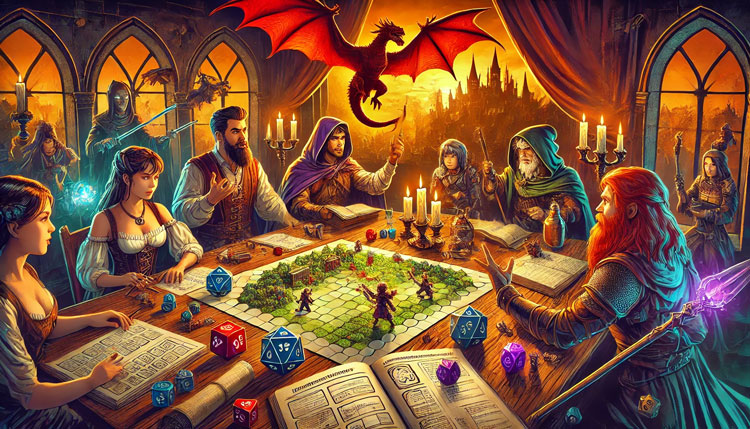From February 17 to 21, Codelearn centers will be hosting the second themed week of the school year, and this time, it’s all about Dungeons & Dragons! This popular tabletop role-playing game lets players create imaginary characters and embark on epic adventures guided by the Dungeon Master (DM), who acts as both storyteller and game director. Using dice, character sheets, and a whole lot of imagination, players must make decisions, solve problems, and overcome challenges.
Dungeons & Dragons is a highly interactive game that encourages creativity and teamwork. To play, you’ll need a group of two to five players, one of whom takes on the role of the Dungeon Master. The rest of the players create unique characters of different races and classes. As they explore a fantasy world, interact with other characters, and face all sorts of dangers, the DM describes the setting, narrates the story, and controls the non-player characters. Players’ actions are determined by rolling dice, which decide the outcomes of attacks, skill checks, and problem-solving attempts.
Want to start playing D&D?
If you’re curious about Dungeons & Dragons and want to dive in, the best place to start is the official website, D&D Beyond, or a specialty game store where you can learn more about the essential materials for getting started. In general, here’s what you’ll need to play:
─ Find a group. Ask your friends or look for D&D communities online to connect with other players.
─ Get the necessary materials. At minimum, you’ll need the Player’s Handbook, a set of polyhedral dice (d4, d6, d8, d10, d12, and d20), paper, a pencil, and possibly miniatures and/or maps for your campaign.
─ Create your character. Use the Player’s Handbook to build your character by choosing a race, class, abilities, and backstory. This is the hero (or anti-hero) you’ll play in the game.
─ Embark on an adventure. The DM will introduce the story, and players will make choices that shape the world and influence how the game unfolds. Adventures can be pre-written or completely improvised, depending on your group’s style.
One of the most important parts of the game is the character sheet, a document that tracks all the key details of your character, including their stats, abilities, health points, equipment, and backstory. This sheet helps players keep track of their progress, record changes to their skills and inventory, and stay consistent in roleplaying their character throughout the campaign. Some key aspects of character sheets include: classes (fighters, wizards, clerics, druids, etc.), races (humans, elves, dwarves, gnomes, and more), abilities & stats (strength, intelligence, wisdom, charisma, etc.) and backstory (your character’s origin and motivations). Character sheets allow players to monitor their character’s development, track experience points, and stay immersed in the game world as they interact with other players and the setting created by the DM.
This themed week is the perfect time to explore the world of Dungeons & Dragons, a game that has inspired countless fantasy books, movies, TV shows, and video games over the years, building a passionate community of players around the globe. Ready to roll the dice?

